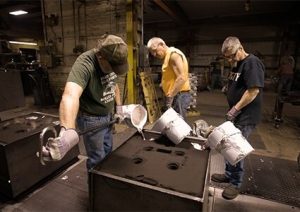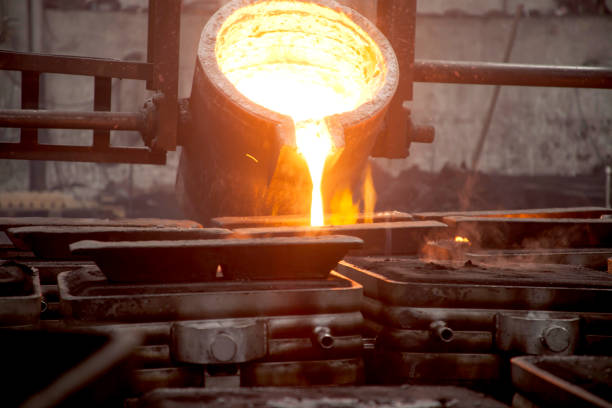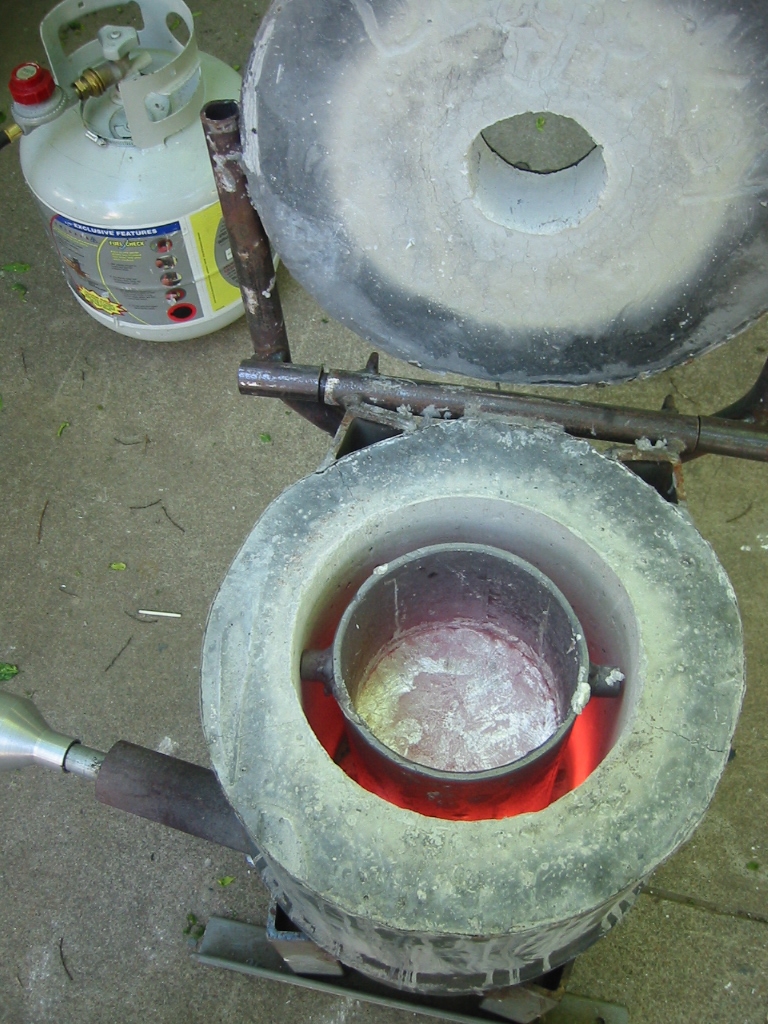Definitive Overview of Wisconsin Aluminum Foundry and Its Impact on U.S. Manufacturing
A Comprehensive Overview to the Conveniences of Making Use Of Aluminum From Foundries
Aluminum from foundries presents a series of advantages that make it a useful product throughout numerous industries. Its lightweight nature adds to cost financial savings in transport and boosts general item efficiency. In addition, aluminum's amazing resistance to deterioration guarantees longevity and decreases maintenance requirements. The benefits extend beyond these facets. Understanding the full range of aluminum's residential or commercial properties and their implications can disclose even deeper understandings into its function in contemporary applications
Recognizing Foundry-Grade Aluminum
Foundry-grade aluminum is a specialized product renowned for its outstanding residential properties and versatility in different applications. This sort of aluminum is generally generated through regulated casting procedures, permitting for exact control over its structure and microstructure. As an outcome, foundry-grade aluminum shows premium mechanical buildings, including outstanding strength and corrosion resistance, making it suitable for requiring settings.
In enhancement to its architectural honesty, foundry-grade aluminum can be conveniently molded right into complex shapes, offering designers and designers with versatility in their jobs. Its ability to endure high temperature levels better enhances its appeal for markets such as vehicle and aerospace, where efficiency and dependability are vital. Furthermore, foundry-grade aluminum is typically recyclable, adding to sustainability initiatives. By using this material, manufacturers can attain an equilibrium of performance, sturdiness, and ecological duty, making foundry-grade aluminum a recommended option for a large range of commercial applications.
Lightweight Characteristics and Their Advantages
The lightweight homes of aluminum from foundries supply significant advantages in different applications. Decreased transport prices can be attained because of the reduced weight, permitting much more reliable logistics. In addition, the improved product performance originated from utilizing lighter products can result in enhanced functionality and customer experience.
Lowered Transport Costs
Aluminum's light-weight homes considerably add to decreased transport expenses, making it an attractive selection for different markets. When contrasted to much heavier materials such as steel, aluminum permits lighter lots, allowing lorries to transport more products efficiently. This reduction in weight can cause significant cost savings on fuel intake, as lighter lorries require much less energy to operate. Furthermore, the capacity to deliver larger amounts without exceeding weight restrictions enhances logistical effectiveness. Industries such as automotive and aerospace benefit specifically from these advantages, as they can optimize shipping processes and decrease total operational prices. Consequently, making use of aluminum from foundries not just simplifies transport however also supports sustainable techniques by minimizing carbon emissions associated with heavy products transport.
Boosted Item Efficiency

Deterioration Resistance: A Secret Benefit
Aluminum from foundries offers phenomenal corrosion resistance, mostly because of its all-natural oxide layer. This protective finish kinds when aluminum is exposed to air, stopping additional oxidation and deterioration. As a result, items made from aluminum can show durable resilience, making them perfect for numerous applications in challenging atmospheres.
All-natural Oxide Layer
The natural oxide layer that develops on aluminum surfaces works as a necessary defense versus deterioration. This slim, clear obstacle establishes when aluminum is subjected to oxygen, successfully shielding the underlying steel from numerous environmental aspects. The oxide layer is both steady and resilient, ensuring that aluminum preserves its honesty in time. Unlike other steels that may rust extra quickly, aluminum's oxide layer protects against the formation of corrosion and other harmful compounds. This characteristic is particularly beneficial in markets where products are revealed to dampness or harsh chemicals. As a result, the visibility of the all-natural oxide layer adds substantially to the longevity and reliability of aluminum products, making it a preferred option in many applications.
Resilient Toughness
While lots of materials catch the wear and tears and environmental direct exposure, the lasting resilience of aluminum attracts attention, primarily due to its remarkable corrosion resistance. This resistance is credited to a natural oxide layer that creates on its surface, effectively shielding the metal from dampness, chemicals, and other corrosive representatives. Unlike steel, which can rust and degrade over time, aluminum remains intact, making it excellent for different applications, including construction, automobile, and aquatic markets. Its straight from the source lightweight nature, combined with durability, enables reduced upkeep costs and longer life-spans in products. As a result, aluminum from foundries gives a sustainable option that minimizes substitute regularity, adding to both economic effectiveness and environmental responsibility. This strength enhances its appeal in various applications.
The Recyclability of Aluminum
Provided its considerable usage across numerous markets, the recyclability of aluminum offers a considerable environmental advantage. Aluminum can be recycled indefinitely without shedding its residential properties, making it a prime candidate for sustainable methods. The recycling process needs only a portion of the energy required to generate new aluminum from basic materials, reducing greenhouse gas emissions and conserving natural deposits. Additionally, the recycling of aluminum diverts waste from landfills, contributing to more efficient waste management systems.

Cost-Effectiveness in Various Applications
Many markets recognize aluminum's cost-effectiveness, making it a preferred selection for numerous applications. Its light-weight nature decreases transportation costs and power intake, considerably adding to overall savings. In production, aluminum's pliability enables for efficient shaping and creating, decreasing waste during manufacturing.
Furthermore, aluminum's sturdiness warranties long life, which minimizes the demand for regular substitutes and maintenance. The material's corrosion resistance likewise translates into lower long-term expenses, as it calls for much less safety coating and care contrasted to various other steels.

Sustainability and Environmental Effect
Aluminum's cost-effectiveness is matched by its sustainability and positive ecological effect. The metal is very recyclable, with about 75% of all aluminum generated still in operation today. This recyclability substantially minimizes the requirement for raw material extraction, minimizing energy consumption and connected greenhouse gas discharges. Shops play a vital role in the recycling process, using sophisticated modern technologies to repurpose scrap aluminum successfully.
Aluminum manufacturing from recycled product takes in only about 5% of the energy needed for primary aluminum production. This significant energy savings equates to decrease carbon footprints, aligning with worldwide sustainability goals. Furthermore, aluminum's light-weight nature go to my blog enhances gas effectiveness in transportation applications, additionally adding to minimized emissions throughout its lifecycle. As markets increasingly focus on sustainable techniques, aluminum from read review foundries becomes a desirable selection, promoting ecological stewardship while supporting economic development.
Frequently Asked Inquiries
What Are the Usual Applications of Foundry-Grade Aluminum?
Typical applications of foundry-grade aluminum include automotive elements, aerospace components, machinery, construction products, and durable goods. Its lightweight nature, deterioration resistance, and excellent mechanical properties make it appropriate for varied sectors and producing procedures.
Just How Is Foundry-Grade Aluminum Produced?
Foundry-grade aluminum is produced via melting aluminum scrap or ingots, adhered to by alloying with various other steels. The liquified aluminum is after that cast right into mold and mildews, allowing it to strengthen into different shapes for diverse applications.
What Are the Safety And Security Factors To Consider When Functioning With Aluminum?
Safety and security considerations when functioning with aluminum consist of proper ventilation to prevent breathing in dust, usage of individual protective devices to stop skin call, and awareness of fire hazards associated with liquified aluminum throughout processing and spreading.
Just How Does Foundry-Grade Aluminum Compare to Various Other Steels?
Foundry-grade aluminum provides a premium strength-to-weight proportion compared to several steels, alongside excellent corrosion resistance and thermal conductivity. Its convenience and capability to be easily formed make it a recommended choice in various applications.
What Maintenance Is Needed for Aluminum Products?
Aluminum products need very little upkeep, mostly involving normal cleaning to avoid oxidation and dust buildup (Aluminum Castings). Protective coatings might improve longevity, while periodic inspections can assure structural honesty and address any kind of wear or damage immediately
Foundry-grade aluminum is a specialized material renowned for its outstanding properties and adaptability in numerous applications. Leveraging lightweight buildings, aluminum improves product performance throughout numerous applications. Unlike steel, which can rust and weaken over time, aluminum continues to be undamaged, making it excellent for numerous applications, including construction, auto, and aquatic markets. Aluminum manufacturing from recycled product consumes only around 5% of the energy required for main aluminum manufacturing. Foundry-grade aluminum is generated via melting aluminum scrap or ingots, adhered to by alloying with other metals.